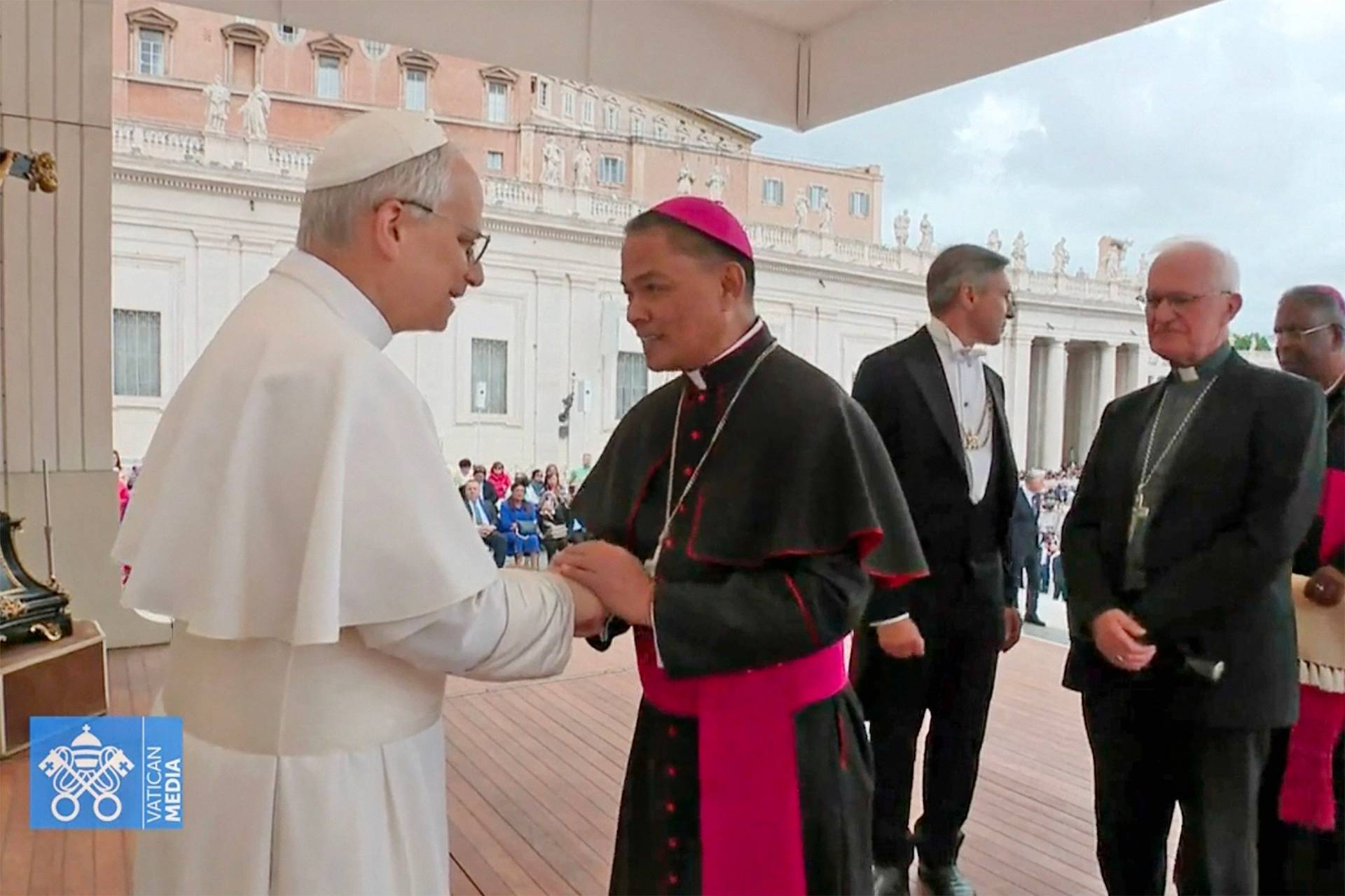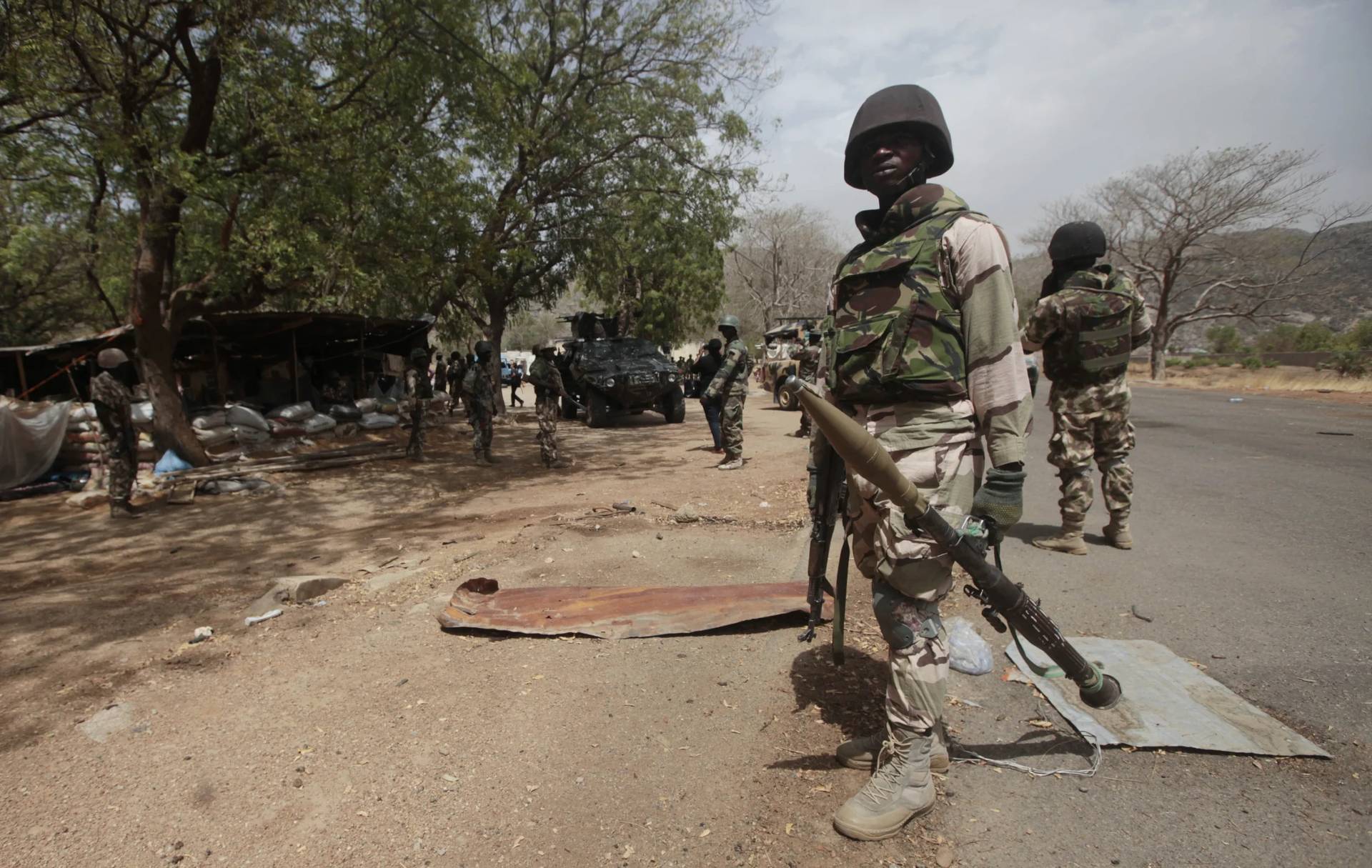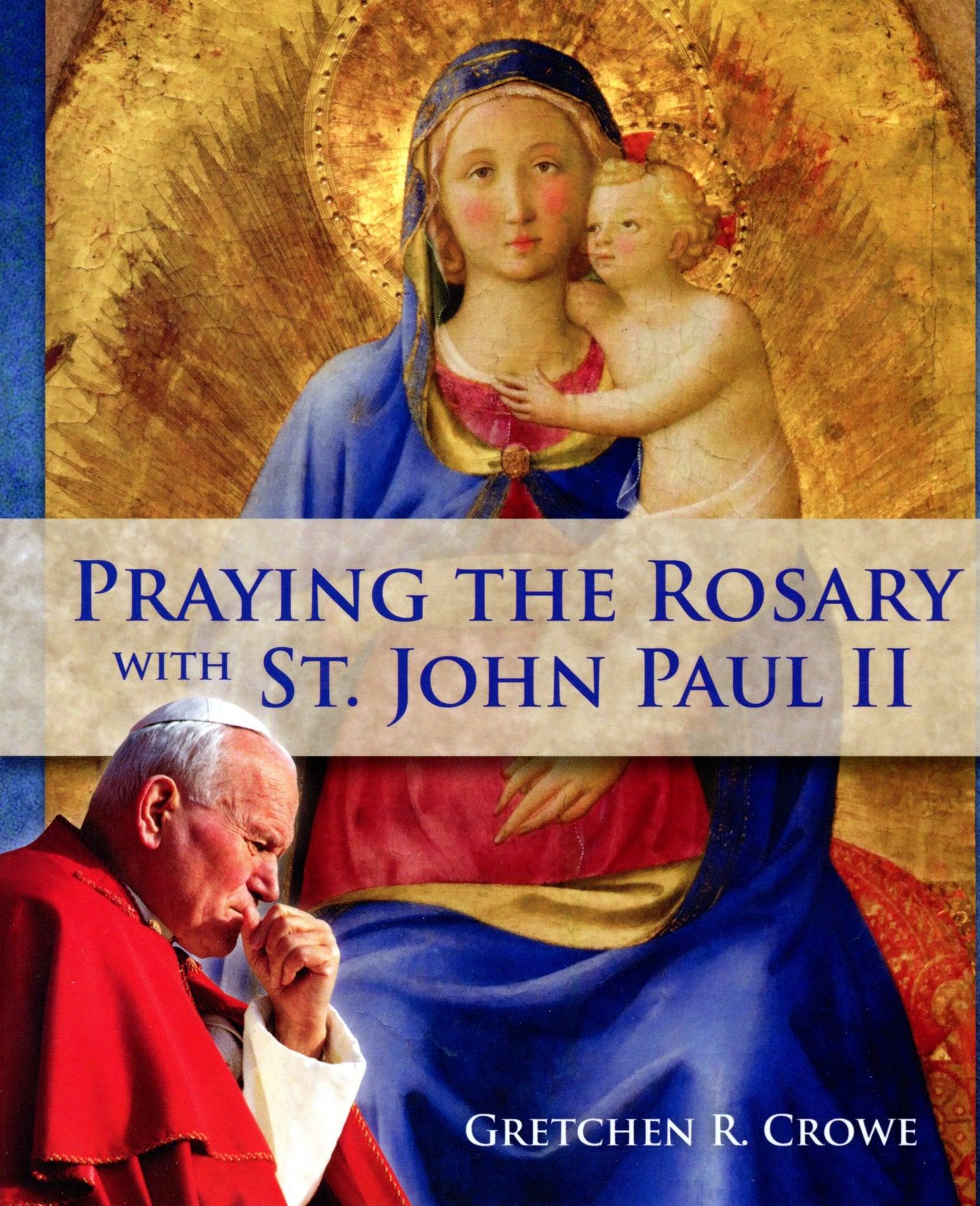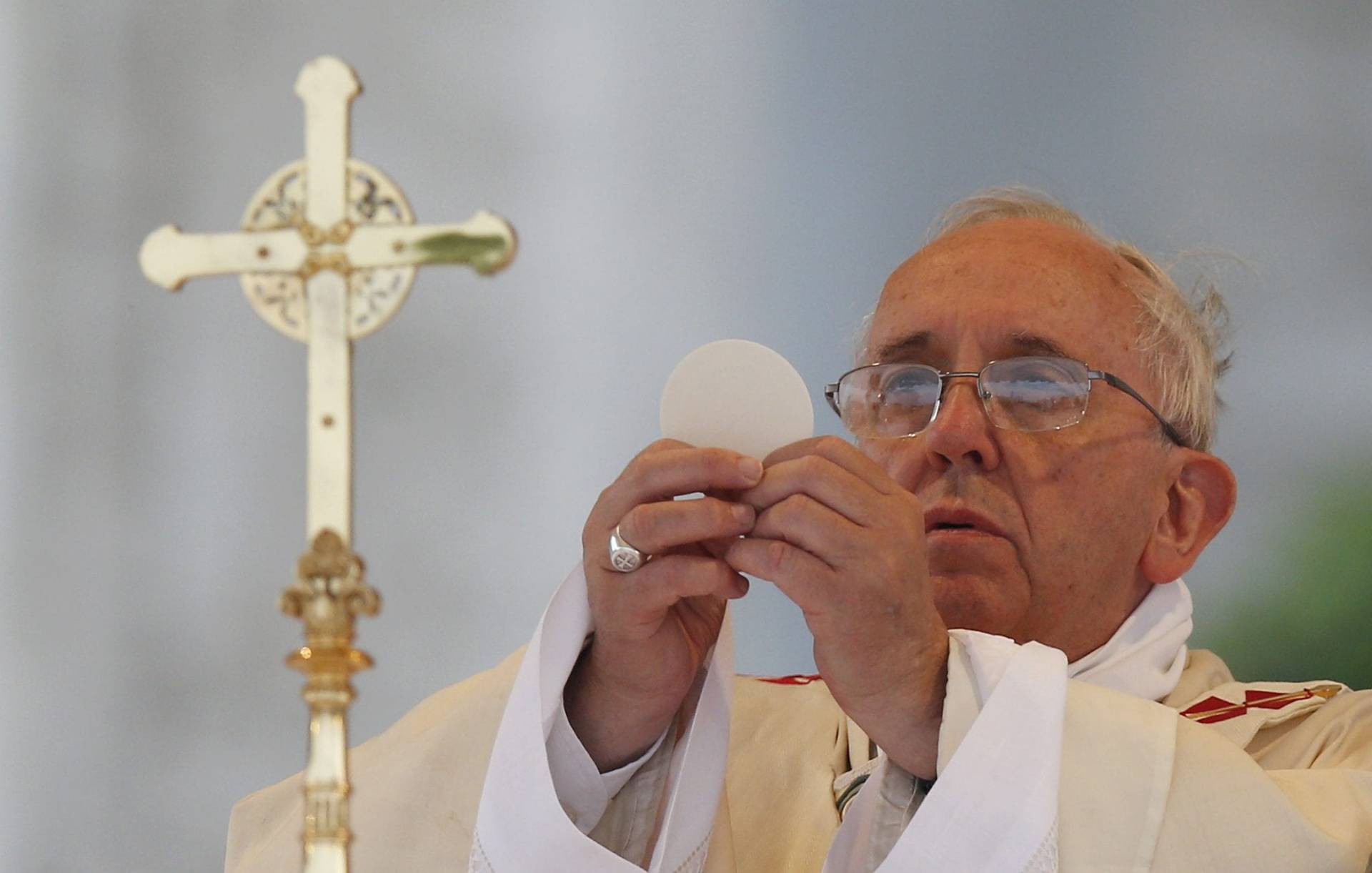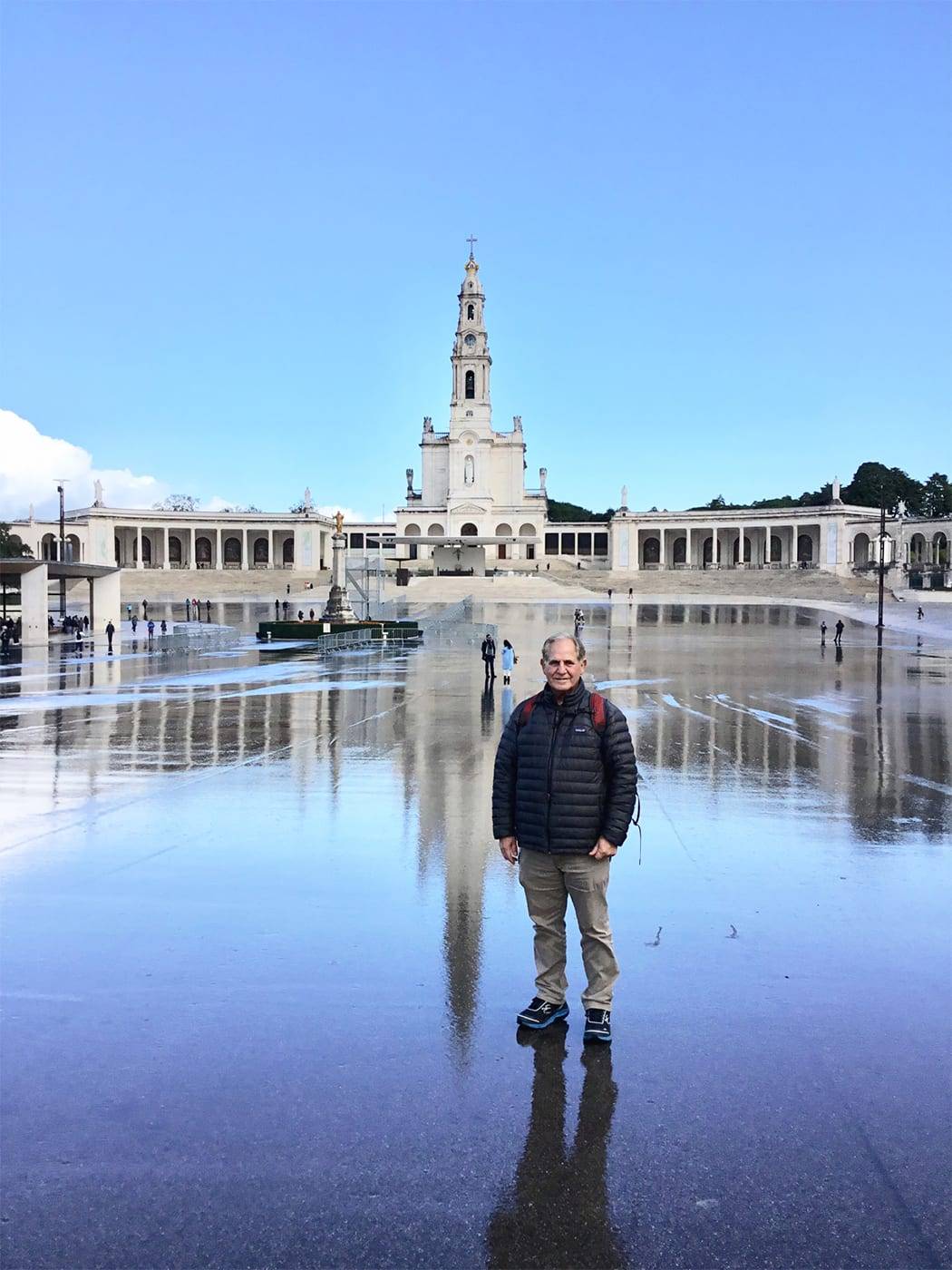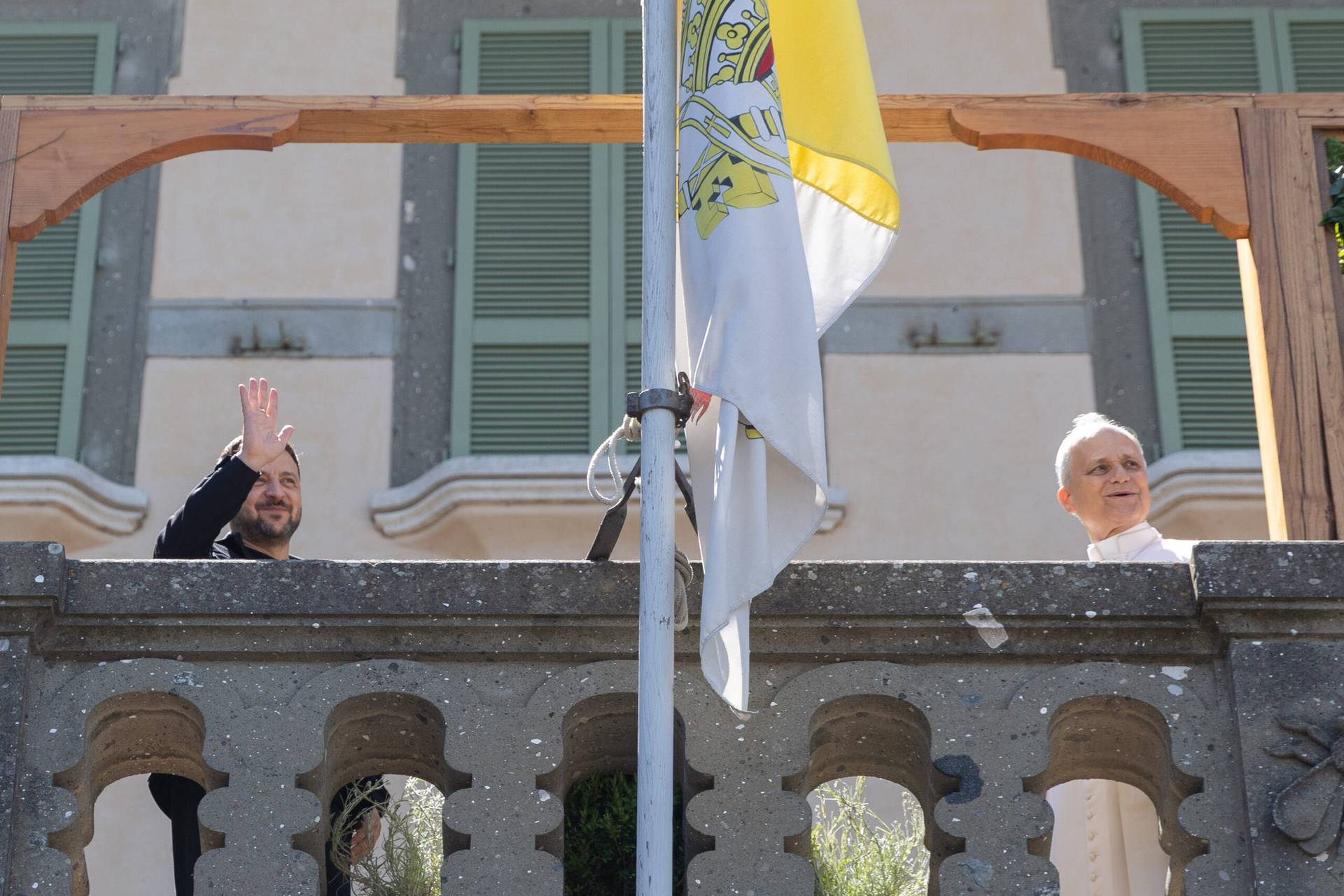MUMBAI, India – Every Wednesday at 4 p.m. in St. Michael’s Church in Mumbai, thousands of people crowd the large urban shrine for a weekly prayer before an image of the Virgin Mary under the title “Our Lady of Perpetual Help,” which tradition holds is capable of working miracles for people in need.
Pilgrims arrive early, many shuffling down the central aisle of the church on their knees. They remove their shoes in a traditional sign of respect. They sit, stand, or crouch, intently focused on the prayer. Before they leave, many festoon the Virgin with floral garlands.
Afterward, scores of people line up at a back door waiting for a priest to come out to offer a final blessing. Many bow, reverently touching the priest’s feet or the hem of his shirt, then rise and take a dose of Holy Water from a nearby dispenser.
This week, a typically long line formed Wednesday afternoon for a blessing bestowed by the Rev. Charles Vaz, who directs a local college of art and music, despite rains fueled by India’s monsoon season.
Such a scene would represent impressive devotion under any circumstances, but what makes St. Michael’s story most remarkable is that the vast majority of these pilgrims aren’t Catholics, or even Christians. They are faithful Hindus.
That’s one face of contemporary India – dazzling tolerance and inter-faith respect, rooted in intense spirituality. A 2015 WIN/Gallup survey found that India has by far the highest population of intensely religious people on earth, with 80 percent of Indians – between 960 million and 1 billion people – describing religion as “very important” in daily life.
Although Christians are only about 2 1/2 percent of the population, by all accounts they enjoy wide esteem here, in part because of the extensive network of schools, hospitals, and other social organizations they operate.
Sister Beryl Xavier, superior of a small community of Carmelite nuns in Mumbai, said that when she walks down city streets in her religious habit, ordinary Hindus often make a spontaneous gesture of veneration, such as bowing or touching their foreheads. Some, she said, even make the sign of the cross, trying to show respect by mimicking a Catholic practice.
“They think we’re representatives of God,” Sister Xavier said, laughing that the sisters rarely get such deference from their fellow Catholics – who, she said, understand that “we’re just human beings.”
Yet such flashes of harmony are not the full story.

Another member of Xavier’s own Carmelite order, an unassuming 64-year-old nun by the name of Sister Philomena D’Mello, has tasted the consequences when India’s intense religiosity turns ugly.
One Saturday in March 2008, Sister D’Mello and another member of her order were in a rural village of western India called Sanghoti. They were staging a year-end celebration for local “tribals,” a term used for indigenous persons considered utterly outside the old caste system., who had completed a course in basic literacy and life skills.
(Government statistics released this month reveal that 315 million Indians are illiterate and another 280 million barely literate, making the effort to foster literacy a national priority.)
Those tribals, Sister D’Mello said, came from the poorest of the poor. Among other things, the sisters were trying to impart some savvy about money management, helping them open bank accounts with as little as 10 Indian rupees, the equivalent of about 16 cents US, and to work out personal budgets.
In addition, Sister D’Mello said, the sisters also help villagers secure government benefits for the poor to which Indian law entitles them, but which they often don’t claim, such as subsidized water, power, and food.
That particular day, the sisters were inaugurating an herbal medicine machine for the village which had been donated by a benefactor. The idea was to show local women how to use it, in order to generate a small income from sales of herbal products.
The aim of the sisters’ work in these rural villages, Sister D’Mello insists, has nothing to do with religious conversion.
“Come to our program and see what we’re going to do,” she said. “If you hear anything about our God, then speak up, but that’s not what we’re doing. We’re just trying to do something good for the people.”
“Not one single person will convert,” she said.
Such assurances, however, did not dissuade a group of Hindu radicals from a neighboring village from descending on Sanghoti that day, demanding that the nuns get out of the area.
According to D’Mello, they accused the sisters of trying to convert the villagers to Christianity and threatened them with broken legs, even death, if they didn’t leave.
When the nuns refused to depart, Sister D’Mello said, the mob turned violent.
As she describes the scene, roughly 40 to 50 Hindu women began assaulting her, pushing her around and slapping her in the face, while some of the men threw rocks at the platform that had been set up for the celebration. A fellow sister was dragged by the hair and punched by members of the crowd.
At one stage, Sister D’Mello said, the more aggressive women in the mob threatened to strip her naked and force her to parade through the streets of the village in order to humiliate her.
In the midst of the chaos, Sister D’Mello said she tried to keep her wits.
“If you’ll just listen, I will give you all the answers you want,” she recalls shouting at one point, “but you will not touch me. That’s where the line is drawn.”
In the end, the police arrived and Sister D’Mello escaped without serious injury. The worst that happened, she said, was that her eyeglasses were shattered in the scrum.
Yet she knows things easily could have played out differently, as they did just a few months later in the eastern state of Orissa, where machete-wielding Hindu radicals brutally killed an estimated 120 Christians in a series of village riots.
Sister D’Mello she said she spent the next two years in counseling, coping with the terror that would sometimes spontaneously flood back. Still today, she said, she’d be too scared to return to the village where it happened.
“I think yes, I would be afraid,” she said. “It would all come back to me.”
Despite being haunted by the experience, Sister D’Mello ended up forgiving her attackers.
One year after the assault, she signed a legal brief asking that criminal proceedings against several women identified as leading the assault be halted, stipulating only that she wanted her fellow sisters to be able to continue doing their work unharmed.
Sister D’Mello’s experience is depressingly common in today’s India, where many Christians say that a rising tide of extremist national sentiment leaves them and other minority groups as convenient targets.
Leaders of a newly formed “United Christian Forum for Human Rights” say that between 1997 and 2014, there were 150 to 350 cases of anti-Christian violence somewhere in the country every year. A new website, Speak Out Against Hate, has been created to track such cases, and it reports that so far in 2015, there’s been at least one attack each week.
Ram Puniyani, a Hindu engineer and human rights activist, recently said it’s worrying that physical assaults on Christians are no longer confined largely to villages, but are now happening in urban areas.
He described mounting hostility to India’s Christians as a trend that “concerned democratic rights individuals need to wake up to.”
Sister D’Mello insisted, however, that her experience reflects not just the worst of India’s hyper-charged religious milieu, but in some ways its best.
A year after the assault occurred, she said, many of her attackers apologized, saying they’d come to see the work the sisters are doing as a positive thing. Some of the same women who slapped her around, she said, today are actually helping the sisters with their programs.
“It shows there is always hope,” Sister D’Mello said, arguing that the shared spiritual commitment to do good, and not the flash of violence she endured, embodies the “real” spirit of her country.
“I have to say, it makes me feel that my suffering had value,” D’Mello said. “I’m happy with what it produced.”
For India’s Christian minority, this instinct, too, would appear to be among the paradoxes defining their life today: A stubborn streak of hope, often maintained in the teeth of painful experience.








